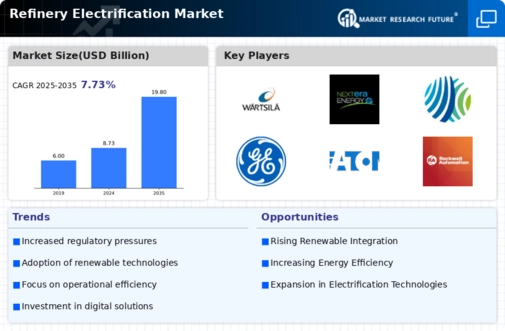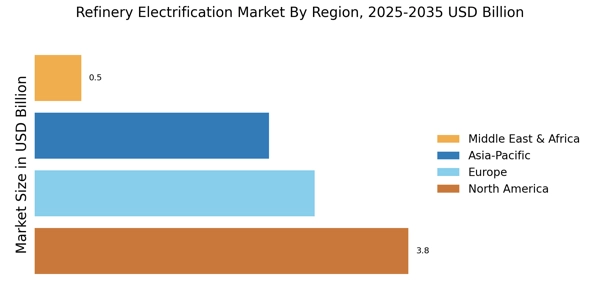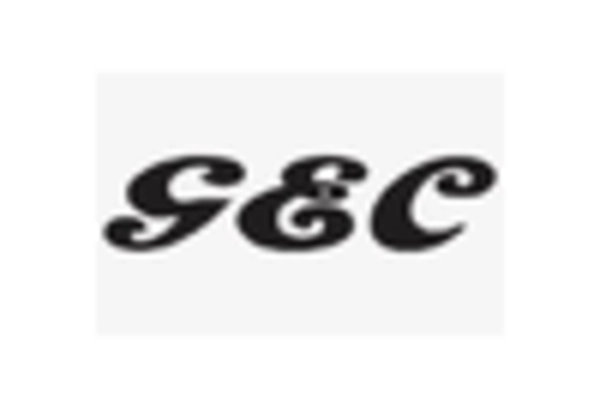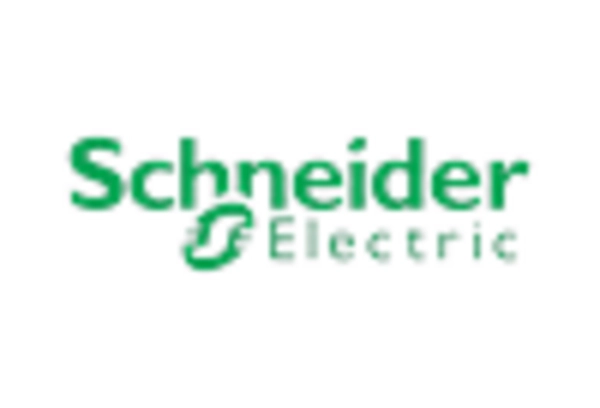Rising Energy Costs
The increasing costs associated with traditional fossil fuels are driving the transition towards electrification in the refinery sector. As energy prices fluctuate, refineries are compelled to seek more stable and cost-effective energy sources. The Refinery Electrification Market is witnessing a shift as companies invest in electrification technologies to mitigate the impact of rising energy costs. This transition not only enhances operational efficiency but also reduces dependency on volatile fossil fuel markets. Furthermore, the integration of renewable energy sources into refinery operations is becoming more prevalent, potentially leading to long-term cost savings. The financial implications of energy costs are thus a significant driver for the Refinery Electrification Market, as refineries aim to optimize their energy consumption and reduce overall operational expenses.
Environmental Regulations
Stringent environmental regulations are increasingly influencing the Refinery Electrification Market. Governments and regulatory bodies are implementing policies aimed at reducing greenhouse gas emissions and promoting cleaner energy alternatives. These regulations often mandate the adoption of electrification technologies in refineries, compelling operators to invest in sustainable practices. For instance, the implementation of carbon pricing mechanisms and emissions trading systems is pushing refineries to adopt electrification as a means to comply with environmental standards. The market is responding to these regulatory pressures by innovating and adopting electrification solutions that align with sustainability goals. As a result, the Refinery Electrification Market is likely to experience growth driven by the need for compliance with evolving environmental regulations.
Technological Innovations
Advancements in technology are playing a pivotal role in shaping the Refinery Electrification Market. Innovations in electric equipment, energy storage systems, and smart grid technologies are enhancing the feasibility and efficiency of electrification in refineries. The development of more efficient electric motors and heat pumps, for instance, is enabling refineries to reduce energy consumption and improve operational performance. Moreover, the integration of digital technologies, such as IoT and AI, is facilitating real-time monitoring and optimization of energy use in refinery operations. These technological advancements not only support the electrification process but also contribute to the overall competitiveness of refineries in the market. As such, the Refinery Electrification Market is likely to benefit from ongoing technological innovations that enhance the efficiency and sustainability of refinery operations.
Investment in Renewable Energy
The growing investment in renewable energy sources is a key driver for the Refinery Electrification Market. As refineries seek to reduce their carbon footprint, many are turning to renewable energy options such as solar, wind, and biomass. This shift not only aligns with global sustainability goals but also offers potential cost advantages in the long run. The integration of renewable energy into refinery operations can lead to a more resilient energy supply and reduced reliance on fossil fuels. Furthermore, the increasing availability of government incentives and subsidies for renewable energy projects is encouraging refineries to invest in electrification technologies. Consequently, the Refinery Electrification Market is poised for growth as more refineries adopt renewable energy solutions to enhance their operational sustainability.
Market Demand for Cleaner Fuels
The rising demand for cleaner fuels is significantly influencing the Refinery Electrification Market. Consumers and industries are increasingly prioritizing sustainability, leading to a shift in fuel preferences towards lower-emission alternatives. This trend is prompting refineries to adopt electrification technologies to produce cleaner fuels more efficiently. The transition to electrification not only helps refineries meet consumer expectations but also aligns with broader environmental goals. As the market for cleaner fuels expands, refineries are likely to invest in electrification solutions that enhance their ability to produce and distribute these fuels. This growing demand for cleaner fuels is thus a critical driver for the Refinery Electrification Market, as it compels refineries to innovate and adapt their operations to meet evolving market needs.


















Leave a Comment